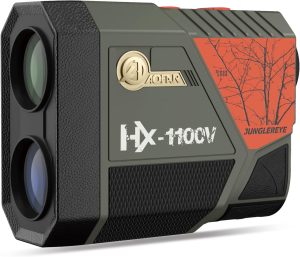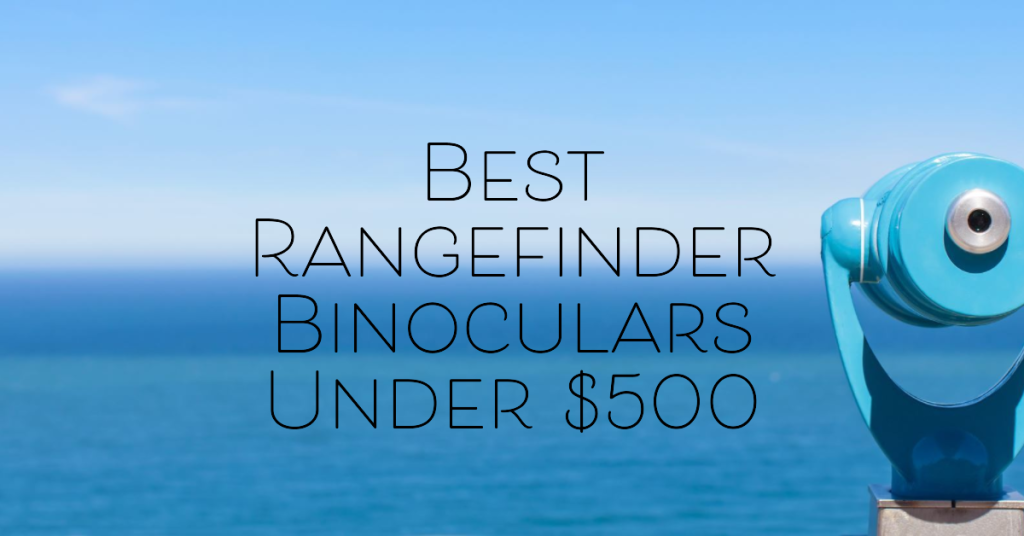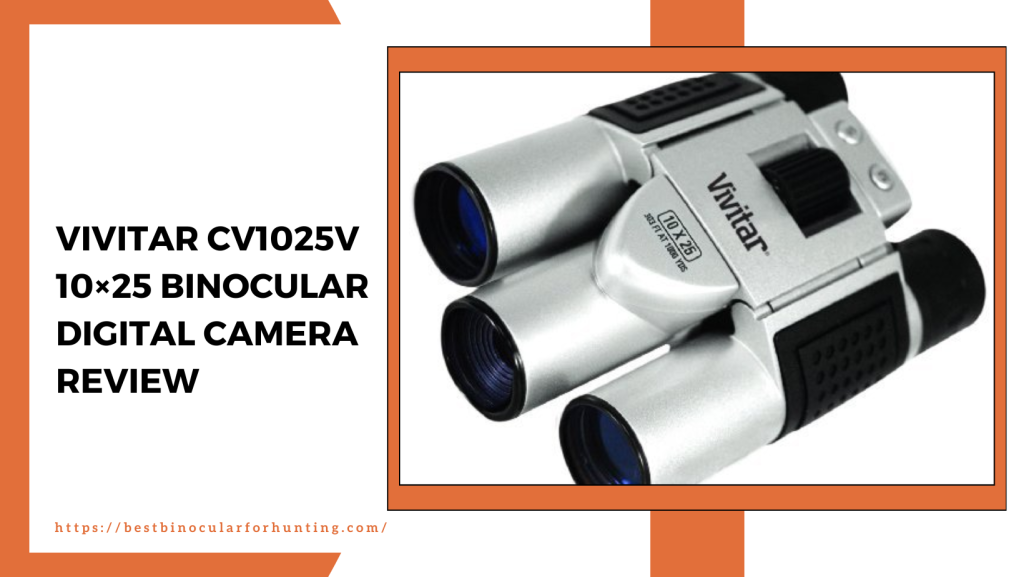Rangefinder binoculars are an excellent tool for hunters to accurately measure distance to their target. Having the ability to range subjects while scanning the terrain and spotting game with binoculars all in one unit is invaluable. For 2024, there are several great options for hunters looking for high quality rangefinding binoculars under $500.
Key Features of Rangefinder Hunting Binoculars Under $500
When selecting a rangefinder binocular designed for hunting, there are a few key features to look for:
- Rangefinding ability – The maximum distance the binoculars can accurately range is important. Many models under $500 will range up to 1000+ yards.
- Optical performance – You want bright, clear image quality to spot game and view through brush/trees. Things like light transmission, objective lens size, and lens coatings impact optical clarity.
- Compact/lightweight – Since you’ll be carrying them over long distances, having a lighter weight and compact size rangefinder binocular is ideal. Most weigh under 30 oz.
- Durable – They should withstand bumps and exposure to the elements while hunting. Rubber armor and waterproof/fogproof construction add durability.
- Angle compensation – This accounts for the angle to provide you with the horizontal distance from steep uphill or downhill shots. Very useful for hunters.
Taking all these aspects into account, below are the top rangefinding binocular picks under $500 for hunters this year:
Best Rangefinder Hunting Binoculars Under $500
1. Bushnell Fusion 1 Mile ARC Rangefinding Binocular

- 10x42mm objective lenses
- 6.5 degree angle compensation
- 5-1300 yard ranging
- IPX7 fully weatherproof
- Weighs 24 oz
The Bushnell Fusion 1 Mile 10×42 stands out with its long distance 1300 yard ranging capabilities and excellent 6.5 degree angle compensation.
With a lightweight, compact frame, these binoculars are easy to keep steady for viewing distant subjects. Fully multi-coated optics and BaK4 prisms give it HD clarity. A great pick for western hunters or those needing to spot animals from afar.
Key Features:
- 10x magnification and 42mm objective lenses
- Accurate rangefinding from 5 up to 1300 yards
- Built-in inclinometer provides holdover/drop data from angle compensation
- Weighs 24 oz – lightweight and portable
- Rubber armored metal chassis – durable for rugged use
| Magnification | 10x |
|---|---|
| Objective Diameter | 42mm |
| Eye Relief | 18mm |
| Field of View | 330 feet/1000 yards |
2. AOFAR HX-10S Rangefinder Hunting Binoculars

- 1200 yard ranging
- Waterproof IPX7
- Color LCD display
- Weighs 1.6 lbs
- Low light night vision
AOFAR makes our list with their high powered 10×42 set of rangefinding binoculars purpose built for hunters. With advanced low light capabilities via an IR sensor and 850nm wavelength light, hunters can detect game in dim conditions.
The wide 1000 yard field of view makes scanning and finding animals faster. The impressive 6.5 degree angle calculation provides you with horizontal distance data to target. Overall an excellent hunting multi-tool for a lower budget.
Key Features
- 10x magnification & 42mm objective lenses
- Equipped with infrared sensor for nighttime observation
- Ranges accurately out to 1200 yards
- 6.5° angle range compensation with slope function
- Environmentally sealed with IPX7 waterproof rating
| Magnification | 10x |
|---|---|
| Objective Diameter | 42mm |
| Eye Relief | 20mm |
| Field of View | 328 feet/1000 yards |
3. Vortex Optics Diamondback HD 10×50 Rangefinding Binocular

- 10x magnification
- Extra-low dispersion glass
- Fully multi-coated lenses
- Argon purged and o-ring sealed
- 6.3 degree angle compensation
- Weighs 27 oz
Vortex is a trusted optics brand known for quality. The Diamondback HD 10×50 has a powerful laser rangefinder that’s accurate to +/- 3 yards out to 2000+ yards. The wider 50mm lenses capture exceptional light transmission for true HD images.
Made to perform in tough conditions, it’s argon purged and O-ring sealed to be completely water and fogproof. 6.3 degree angle compensation provides dead-on holdover measurement. A perfect balance of optical clarity, ranging performance, size, and cost.
Key Features:
- 10x magnification & 50mm objective lenses
- Accurate rangefinding from 11 yards out to 2000+ yards
- 6.3 degree angle compensation for sloped shooting
- Argon purged and O-ring sealed – waterproof & fogproof
- Fully multi-coated lenses with phase corrected prisms
| Magnification | 10x |
|---|---|
| Objective Diameter | 50mm |
| Eye Relief | 16mm |
| Field of View | 347 feet/1000 yards |
What is Rangefinder Binocular Angle Compensation?
One of the most useful features of rangefinding binoculars for hunters and shooters is angle compensation, sometimes referred to as angle modified ranging.
What is Angle Compensation?
Angle compensation accounts for the angle formed between level ground and the elevated or lowered position you may be shooting from. Since direct line-of-sight distance readings don’t take this angle into account, horizontal distance calculations will be impacted.
For example, if you range a deer 650 yards away, but have a 30 degree downward angle, the actual horizontal distance would be around 540 yards to target. If you don’t have angle compensation, you’d holdover for 650 yards and miss high.
| Degree of Angle | Distance Reads | True Horizontal Distance |
|---|---|---|
| 0 Degrees Level | 650 Yards | 650 Yards |
| 30 Degrees Downward Angle | 650 Yards | 540 Yards |
To solve this, rangefinder binoculars will have an integrated inclinometer and special algorithms programmed to provide you the horizontal distance after calculating for angle. This provides you the correct holdover/drop data.
Most rangefinding binoculars will have angle compensation between 5-7 degrees as anything beyond that steepness provides unreliable readings. But having at least some degree of compensation is a major advantage.
How Do I Use a Rangefinding Hunting Binocular?
Using rangefinder binoculars designed for hunters and marksmen is pretty straightforward. Once you get them set up to your eye, it’s very similar to using a standard laser rangefinder.
To use:
- Power on the rangefinder binoculars – Some have an independent power button, others power on when you press the range button
- Bring optics to your eyes so image is clear – Adjust focus wheel as needed
- Aim center dot at target you want to range – Keep hands steady
- Press and hold range button to fire laser
- Range reading displays in view – Most models vibrate/beep when locked onto target
- Note reading and total horizontal distance if angled shot
- Repeat process as needed between scanning with binos
Remember that most rangefinders need a reflective target to return enough laser energy to display an accurate distance. So performance can vary between solid objects, moving game, brush, etc.
Practice ranging known yardages to see how your particular set handles different terrain/objects to build confidence in their accuracy before hunting season. This helps you know when to trust readings.
Rangefinder Binoculars vs Rangefinders: Which is Better?
A common question asked is whether separate binoculars and a laser rangefinder works better than an all-in-one rangefinding binocular. Let compare the pros and cons:
| Rangefinder Binocular | Binoculars + Rangefinder | |
|---|---|---|
| Cost | Single purchase $500 or less | More expensive to buy both |
| Weight | Typically 25-30 oz | Carrying two units heavier |
| Convenience | Range and scan with one tool | Constantly switching between two |
| Accuracy | Varies by model and conditions | Separate units can be more precise |
As you can see both options have their merits. While rangefinding binos can slightly lack maximum precision of dedicated rangefinders, their improved convenience and cost can give them the overall edge for hunters.
Check out the full comparison here.
How to Choose the Best Rangefinder Binoculars for Hunting
As we’ve covered, rangefinding binoculars can really take your hunting, target shooting, and scouting to the next level once you experience them. However, the growing number of options on the market makes selecting the right model confusing.
Here’s the key factors to evaluate when choosing rangefinding binoculars for hunting specifically:
Laser Rangefinder Performance
- Maximum Range – How far can they accurately range? For most hunters 400-1200 yards is ideal
- Accuracy – Will range readings be close enough for ethical shots? Match capability to your typical ranges
- Angle Compensation – This provides vital slope-adjusted data. Look for 5-7 degree capability
Optical Clarity
- Objective Lens Size – Larger objectives (42mm+) collect more light for brighter images in dawn/dusk hours
- Magnification Power – Most hunting binos feature 8x or 10x magnification. Higher can magnify shakes
- Lens & Prism Quality – Fully multi-coated lenses and quality prism glass improves resolution
Durability & Comfort
- Waterproof/Fogproof – Fully sealed optic seals out moisture, dust, etc.
- Chassis Material – Durable polycarbonate or magnesium alloy bodies withstand rugged use
- Comfortable Design – Check grip ergonomics, eye relief, smooth focus, and weight
Matching maximum laser range performance and optical quality to your needs ensures accuracy. While picking a compact, durable, and comfortable unit enhances your experience carrying them afield. Use this criteria during your search process.
By considering these aspects and narrowing down your priorities, selecting the perfect rangefinder binocular becomes much easier.
Frequently Asked Questions
Q: Will rangefinder binoculars work at night or low light?
A: Standard rangefinding binoculars without special modes or IR sensors will not effectively range targets in very low light or darkness. Some models designed for night vision or hog hunting do feature IR lasers, low light electronics, and IR illumination built-in. So night ranging ability depends on the specific capability of that model.
Q: What is the rangefinding binocular FOV? How is it calculated?
A: The FOV or field of view on binocular refers to width of the visible area through the optic lenses from left to right. It’s typically expressed in feet at either 1000 yards/meters away. To find FOV, take optic magnification and objective lens size into account:
For example: A 10x binocular with a 430 foot field of view @ 1000 yards
To visualize the FOV at closer range, say 100 yards, you calculate as follows:
10x (Magnification) x 100(Yards) x (430 (FOV @1000yds) /1000(yds) = 430 Feet wide view
So field of view scales based on distance and magnification power. Most rangefinder binocular FOVs will range from 300 – 450+ feet to match the hunting situation.
Q: At what distance should I zero my rangefinding binoculars for hunting?
A: Most hunters sight in rifles and ammunition to hit dead-on at 200 or 300 yards. So zero your rangefinder optic at same distance. Simply use known distance targets or survey flags at exact 200/300 yard lines to laser and confirm accurate readings. This ensures congruency through entire rangefinding process between rifle zero and binocular/rangefinder holdover data.
Q: Do all binoculars have rangefinding or just hunting specific models?
A: At this point rangefinding capability is still a unique feature only found on specialty hunting binoculars marketed specifically as “rangefinding binoculars”. Standard birding or outdoor binoculars without built-in laser rangefinders simply offer high magnification optics for scanning. So you need to ensure a set is purpose built with an integrated laser rangefinder module.
Final Thoughts
Investing in a quality set of rangefinding binoculars designed for hunters makes determining distance, plotting shots, and finding game even easier. With multiple excellent options available for under $500, they offer an advantage over separate units.
Choices like the precise yet affordable Bushnell Fusion 1 Mile 10×42 or the Vortex Optics Diamondback HD 10×50 with its wider light gathering objectives lenses make dialing shots in simpler. Paired with the right technique, rangefinding binoculars can quickly become your most vital field tool outside your weapon.



